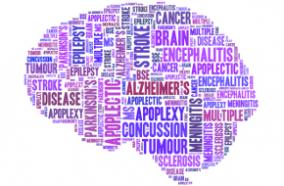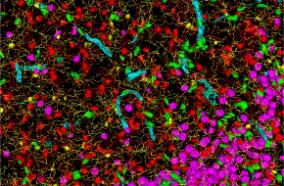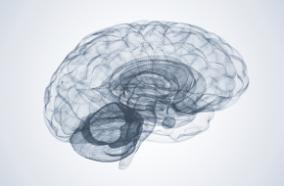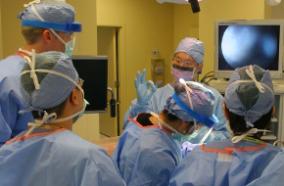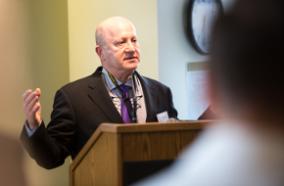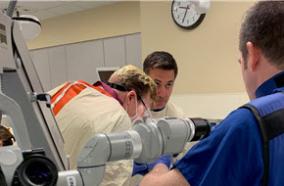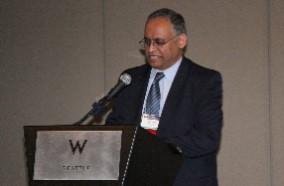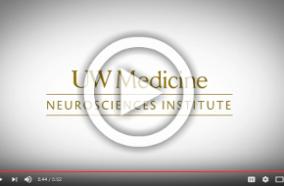1 month 1 week ago
We have developed a low-cost (30 USD), simple do-it-yourself (DIY) potentiostat with cyclic voltammetry (CV), open circuit potential (OCP) and electrochemical impedance spectroscopy (EIS) capability. The HunStat2 potentiostat is based on Analog Devices' AD5941 Analog Front End chip, which significantly simplifies the construction of potentiostats for both direct and alternating current (DC and AC, respectively) techniques. Interested readers are provided with circuit diagrams and a bill of...
Istvan Vamos
1 month 1 week ago
Tractometry of diffusion-weighted magnetic resonance imaging (dMRI) non-invasively quantifies tissue properties of brain connections. It is widely used in aging studies but could be less reliable in aging brains due to increased white matter free water. We demonstrate that computational free water elimination (FWE) and multi-shell multi-tissue (MSMT) modeling both increase the reliability and accuracy of tractometry in a large (n = 396) cohort of older adults (65-103 y.o.). We found substantial...
Kelly Chang
1 month 1 week ago
Meta-analysis of gene-based tests using single-variant summary statistics is a powerful strategy for genetic association studies. However, current approaches require sharing the covariance matrix between variants for each study and trait of interest. For large-scale studies with many phenotypes, these matrices can be cumbersome to calculate, store and share. Here, to address this challenge, we present REMETA-an efficient tool for meta-analysis of gene-based tests. REMETA uses a single sparse...
Tyler A Joseph
1 month 1 week ago
Insomnia and depression are common co-morbidities associated with mild traumatic brain injury (mTBI). Data from Transforming Research and Clinical Knowledge in TBI, a longitudinal cohort study of TBI and orthopedic controls (OTC), were used to examine insomnia trajectories and the temporal relationship between insomnia and depressive symptoms during recovery. mTBI (n = 1,557) and OTC (n = 226) adult patients with no psychiatric or sleep disorder history were assessed at 2 weeks and 3, 6, and 12...
Robin McGee
1 month 1 week ago
CONCLUSION: This Delphi study specifically addresses the gap in clinical guidance for danazol management in HAE patients. The resulting consensus document provides a valuable tool to aid the standardization of danazol discontinuation protocols and ensures that patients can access the safest and most effective treatment options available.
Eunice Dias de Castro
1 month 2 weeks ago
CONCLUSIONS: Despite varying levels of formal knowledge of pain management, individuals with TBI reported utilizing a wide array of strategies to self-manage pain - often informed by "trial-and-error." Guided self-management training may enhance the effectiveness of their approach as well as possibly increase the efficiency in which they develop an effective approach and make subsequent adjustments.
Michael W Williams
1 month 2 weeks ago
Mpox re-emerged globally in 2022 with atypical clinical features and efficient human-to-human transmission, which underscores the need to better understand host immune responses. We conducted an integrative transcriptomic analysis of mpox virus (MPXV) infection in nonhuman primates by leveraging RNA-Seq datasets from whole-blood and skin. We applied the Generalized Linear Model with Quasi-Likelihood F-test and Magnitude-Altitude Score (GLMQL-MAS), a method that combines rigorous statistical...
Mostafa Rezapour
1 month 2 weeks ago
CONCLUSIONS AND RELEVANCE: In this economic evaluation of the Daraja intervention, Daraja was more costly than standard care from both the Tanzanian Ministry of Health and societal perspectives; however, it was associated with improvements in DALYs. These findings suggest that Daraja has a high probability of being considered cost-effective from both economic perspectives.
Megan Willkens
1 month 2 weeks ago
BACKGROUND: The conventional clinical approach to characterising traumatic brain injuries (TBIs) as mild, moderate, or severe using the Glasgow Coma Scale (GCS) total score has well-known limitations, prompting calls for more sophisticated strategies.
Lindsay D Nelson
1 month 2 weeks ago
No abstract
Randall M Chesnut
1 month 2 weeks ago
No abstract
Luca Scarcia
1 month 2 weeks ago
Objective: To examine the interaction between early cognition and motor functioning when predicting functional independence, community participation, homeboundness, and return-to-work 1 year after traumatic brain injury (TBI). Method: Data from 101 adults (M age = 39.6 years) across two TBI Model Systems sites. Cognitive performance (Brief Test of Adult Cognition by Telephone) and motor functioning (FIM-Motor score/Continuity Assessment Record and Evaluation) were collected at inpatient...
Emily Dudek
1 month 3 weeks ago
BACKGROUND: Disordered eating behaviours are prevalent in men, though men have traditionally been understudied in the field of eating disorders. While a thin body ideal is an established risk factor of eating disorders in women, a mesomorphic body ideal with increased muscles and decreased fat may be more relevant in understanding eating disorders in men. Based on the interpersonal model and existing literature, the current study examined the association between interpersonal functioning and...
Mun Yee Kwan
1 month 3 weeks ago
Asian American (AsAm) youth experience persistent disparities in mental health service use, but quantitative data are lacking in existing investigations of barriers in this population. Here, we sought to characterize key barriers to youth mental health services across multiple domains (i.e., structural, perceptual, cultural, trauma-specific) and explore associations between barriers, youth symptoms, and service use. AsAm caregivers (N = 149, M(age) = 39.23, 55% female) completed the study...
Amy Hyoeun Lee
1 month 3 weeks ago
CONCLUSION: This quality improvement evaluation of social care integration using the CRS illustrates a potential pathway for activating social support and healthcare relationships in primary care, but more rigorous designs and longer-term follow up are needed to explore if this pathway leads to improvements in patient or population health and healthcare utilization.
Cara C Lewis
1 month 3 weeks ago
No abstract
Michael J Williams
1 month 3 weeks ago
Traumatic brain injury (TBI) is a risk factor for neurodegeneration and cognitive decline, yet the underlying pathophysiologic mechanisms are incompletely understood. This gap in knowledge is in part related to a lack of reliable and efficient methods for measuring cortical lesions in neuroimaging studies. The objective of this study was to develop a semi-automated lesion detection tool and apply it to an investigation of longitudinal changes in brain structure among individuals with chronic...
Holly J Freeman
1 month 3 weeks ago
CONCLUSIONS: Apparent ethnoracial differences in societal participation among people with TBI are at least partially driven by sociodemographic and injury characteristics. More specifically, baseline characteristics of age, education, and marital status are more meaningful contributors to differences in global societal participation than race/ethnicity. Subordinate aspects of participation yielded different findings, however. Societal participation and its potential drivers require further...
Michael W Williams
1 month 3 weeks ago
CONCLUSION: In cases where vessels abut but do not compress the facial nerve, there can still be position-dependent HFS because of position-dependent compression of the facial nerve, which can be relieved by surgical decompression.
Christopher Adams
1 month 3 weeks ago
CONCLUSIONS: This transcriptomic landscape serves as a resource for biomarker discovery, diagnostic refinement, and prediction of tumor biology and outcome. By enabling projection of new patients' bulk RNA-seq data onto the reference map using nearest neighbor analysis, the framework supports accurate subtype classification. The landscape is publicly available via Oncoscape, an interactive platform for global exploration and application.
Sonali Arora
"university of washington"[affiliation] and neurological surge...: Latest results from PubMed
More posts about UW Neurological Surgery Recent PubMed Publications



